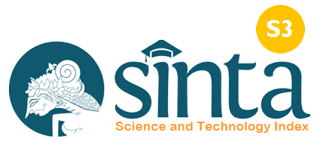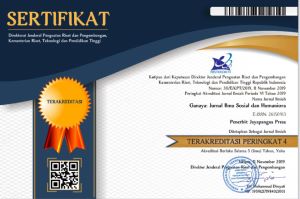Tren Penggunaan Problem-Based Flipped Learning Dalam Pendidikan Abad Ke-21
Systematic Literature Review
DOI:
https://doi.org/10.37329/cetta.v8i3.4734Keywords:
21st-Century Skills, Digital Literacy, Problem-Based LearningAbstract
The transformation of education in the era of the Industrial Revolution 4.0 demands innovative, active, and technology-based approaches. One relevant pedagogical strategy to address this challenge is Problem-Based Flipped Learning (PBFL), which integrates the flipped classroom model with problem-based learning to foster 21st-century skills. This study aims to investigate the publication trends, implementation contexts, challenges, and strategies related to PBFL from 2022 to 2024. A Systematic Literature Review method was employed using the PRISMA protocol, with articles selected from Google Scholar and DOAJ databases. Out of 100 identified articles, 18 met the inclusion criteria and were analyzed thematically. The findings show that PBFL is most frequently implemented in higher education, particularly in science and technology subjects, and is predominantly applied in Southeast Asia. The main implementation challenges include student and teacher readiness, technological infrastructure limitations, and rigid curricular structures. Identified strategies include strengthening the pre-class phase, designing contextual problem-solving activities, utilizing interactive technology, promoting collaborative learning, and conducting ongoing evaluation and reflection. This study provides a comprehensive overview of the potential and challenges of PBFL as an adaptive learning model to support the development of 21st-century competencies across various formal education levels.
References
Abeysekera, L., & Dawson, P. (2015). Motivation and Cognitive Load in the Flipped Classroom: Definition, Rationale and a Call for Research. Higher Education Research & Development, 34(1), 1–14.
Anggraeni, D. A., Hakim, A., & Sulaeman, N. F. (2023). Problem-Solving Ability Through Flipped-Problem Based Learning on Elasticity Materials for High School Student. Physics Education Journal, 6(1), 1–10.
Bergmann, J., & Sams, A. (2012). Flip Your Classroom: Reach Every Student in Every Class Every Day. Alexandria, VA: International Society for Technology in Education.
Brown-Martin, G. (2018). Education & the Fourth Industrial Revolution. In ICERI2018 Proceedings (p. 7270). IATED.
Cabanilla, E. D. (2024). The Rise of Flipped Classroom Practices in Southeast Asia: A Metasynthesis Review of Curriculum Reform and Technological Adaptation. Asian Journal of Education and Development Studies, 13(2), 143–158.
Çakıroğlu, Ü., & Öztürk, M. (2017). Flipped Classroom With Problem-Based Activities: Exploring Self-Regulated Learning in a Programming Language Course. Educational Technology & Society, 20(1), 337–349.
Chang, Y. H., Yan, Y. C., & Lu, Y. T. (2022). Effects of Combining Different Collaborative Learning Strategies With Problem-Based Learning in a Flipped Classroom on Program Language Learning. Sustainability, 14(9).
Chen, K., Wang, Y., Kinshuk, & Chen, N. S. (2020). A Comparison of Flipped Learning With Gamification, Traditional Learning, and Online Independent Study: The Effects on Students’ Mathematics Achievement and Cognitive Engagement. Interactive Learning Environments, 28(4), 515–531.
Chi, M., Wang, N., Wu, Q., Cheng, M., Zhu, C., Wang, X., & Hou, Y. (2022). Implementation of the Flipped Classroom Combined With Problem-Based Learning in a Medical Nursing Course: A Quasi-Experimental Design. Healthcare, 10(12).
de Jong, N., van Rosmalen, P., Brancaccio, M. T., Bleijlevens, M. H. C., Verbeek, H., & Peeters, I. G. P. (2022). Flipped Classroom Formats in a Problem-Based Learning Course: Experiences of First-Year Bachelor European Public Health Students. Public Health Reviews, 43.
Erita, S., & Kata Kunci. (2023). The Influence of Problem-Based Learning-Flipped Classroom (PBL-FC) on Mathematical Argumentation Skills. Indonesian Journal of Science and Mathematics Education, 5(1).
Jasril, J., Sunendar, D., Sumiyadi, S., & Mulyati, Y. (2024). Designing Problem-Based Learning With a Flipped Classroom Design in Appreciating Fiction Prose. Al-Ishlah: Jurnal Pendidikan, 16(1), 358–370.
Maria, M., Shahbodin, F., & Pee, N. C. (2018). Malaysian Higher Education System Towards Industry 4.0 – Current Trends Overview. In AIP Conference Proceedings (Vol. 2016). AIP Publishing.
Moreno, M. S., & Martínez, A. M. (2022). Analysis of the Flipped Classroom Model as a Proposal for Teaching Innovation. Journal of Higher Education Theory and Practice, 22(10), 116–124.
Musva, N. L., Erna, M., & Abdullah, A. (2023). The Effectiveness of Problem-Based Flipped Classroom Model in Improving Chemistry Learning Outcomes of Buffer Solution. Hydrogen: Jurnal Kependidikan Kimia, 11(1), 34.
Ni, Z. H., Huang, J., Yang, D. P., & Wang, J. (2024). Nursing Students’ Experience of Flipped Classroom Combined With Problem-Based Learning in a Paediatric Nursing Course: A Qualitative Study. BMC Nursing, 23(1).
Novita, R. D., Aminatun, T., & Daryono, R. W. (2022). E-Modules Through Flipped Classroom and PBL Models on Environmental Pollution Material to Increase Problem-Solving Ability. Journal of Education Technology, 6(4), 744–754.
Ontowijoyo, S., Nurhayati, S., Wardani, S., & Haryani, S. (2022). Analisis Keterampilan Berpikir Kritis Peserta Didik Melalui Penerapan Problem Based Learning Berpendekatan Flipped Classroom pada Materi Hidrolisis. Chemistry in Education, 11.
Pimdee, P., Sukkamart, A., Nantha, C., Kantathanawat, T., & Leekitchwatana, P. (2024). Enhancing Thai Student-Teacher Problem-Solving Skills and Academic Achievement Through a Blended Problem-Based Learning Approach in Online Flipped Classrooms. Heliyon, 10(7).
Purnomo, P. E. A., Agustini, K., & Suartama, I. K. (2025). Penerapan Model Problem Based Flipped Classroom dalam Pembelajaran: Sebuah Kajian Literatur dan Sistematik. Cetta: Jurnal Ilmu Pendidikan, 8(4), 60–69.
Putri, M. D., Lubis, N. A., & Fairuz, T. (2023). Quality of Student Scientific Argumentation Through the Application of Problem-Based Learning With Flipped Classroom Approach. Jurnal Penelitian Pendidikan IPA, 9(1), 369–377.
Romano Daba, J. B., Rosmansyah, Y., & Dabarsyah, B. (2019, October 1). Problem Based Learning Using Gamification: A Systematic Literature Review.
Rossely, L. A., Budiyanto, M., & Purnomo, A. R. (2023). Implementation of PBL-Flipped Classroom Learning Model to Improve the Learning Outcomes of Junior High School Students in Human Excretion System Materials. Jurnal Pijar MIPA, 18(2), 151–155.
Sanluang, P., & Jommanop, T. (2024). Development of Learning Activities Traditional Flipped Classroom and Problem-Based Learning Model on Plant Production in the 4.0 Era According to the Sufficiency Economy Philosophy. Research and Development, 16(2), 15.
Santosa, W., Murtanto, Y. J., Nilawati, Y., & Kasuma Ali, J. (2025). Top 10 21st Century Skills That Can Be Developed Through the Implementation of Problem Based Learning Method. Perspektif Ilmu Pendidikan, 39(1), 1–6.
Situmorang, S. U., Oktavianus, O., Lestari, L., & Sarwandi, S. (2022). Model Pembelajaran Problem-Based Learning Berbasis Daring di Masa Pandemi Covid-19. Jurnal Intelek Dan Cendikiawan Nusantara, 2(3), 4392-4407.
Soleymani, S., Aliabadi, K., Zaraii Zavaraki, I., & Delavar, A. (2022). Designing and Validating a Flipped Learning Pattern to Enhance Problem-Based Teaching in Higher Education Instructors for Teaching the English Language. Journal of Modern Research in English Language Studies, 9(3).
Sutrio, S., Busyairi, A., Doyan, A., Kosim, K., & Hikmawati, H. (2023). The Effectiveness of the Problem Based Flipped Classroom Model With E-Modules in Improving Critical Thinking Skills of Pre-Service Physics Teachers. Jurnal Pendidikan Fisika dan Teknologi, 9(2), 274–283.
Tobondo, Y. A., Alfian, M., Widnyana, G. A., Ekarini, A., Ruagadi, S., Tarindje, S. D., & Melapa, L. (2024). The Effectiveness of the Quasi-Class Action Approach: Integration of Problem-Based Learning, Flipped Classrooms, and Generative Learning Models. Interdisciplinary Journal Fakultas Ekonomi Universitas Kristen Tentena, 2(2), 95–104.
Wang, A., Xiao, R., Zhang, C., Yuan, L., Lin, N., Yan, L., Wang, Y., Yu, J., Huang, Q., Gan, P., Xiong, C., Xu, Q., & Liao, H. (2022). Effectiveness of a Combined Problem-Based Learning and Flipped Classroom Teaching Method in Ophthalmic Clinical Skill Training. BMC Medical Education, 22(1).
Yurniwati, Y., & Utomo, E. (2020). Problem-Based Learning Flipped Classroom Design for Developing Higher-Order Thinking Skills During the COVID-19 Pandemic in Geometry Domain. In Journal of Physics: Conference Series (Vol. 1663, No. 1, p. 012057). IOP Publishing.
Zhang, F., Wang, H., Zhang, H., & Sun, Q. (2024). The Landscape of Flipped Classroom Research: A Bibliometrics Analysis. In Frontiers in Education, 9, 1165547. Frontiers Media SA.
Downloads
Published
How to Cite
Issue
Section
License
Copyright (c) 2025 Mohamad Irsan Hadi, Ketut Agustini, I Kadek Suartama

This work is licensed under a Creative Commons Attribution-ShareAlike 4.0 International License.
An author who publishes in the Cetta : Jurnal Ilmu Pendidikan agrees to the following terms:
- Author retains the copyright and grants the journal the right of first publication of the work simultaneously licensed under the Creative Commons Attribution-ShareAlike 4.0 License that allows others to share the work with an acknowledgement of the work's authorship and initial publication in this journal
- Author is able to enter into separate, additional contractual arrangements for the non-exclusive distribution of the journal's published version of the work (e.g., post it to an institutional repository or publish it in a book) with the acknowledgement of its initial publication in this journal.
- Author is permitted and encouraged to post his/her work online (e.g., in institutional repositories or on their website) prior to and during the submission process, as it can lead to productive exchanges, as well as earlier and greater citation of the published work (See The Effect of Open Access).
Read more about the Creative Commons Attribution-ShareAlike 4.0 Licence here: https://creativecommons.org/licenses/by-sa/4.0/.





